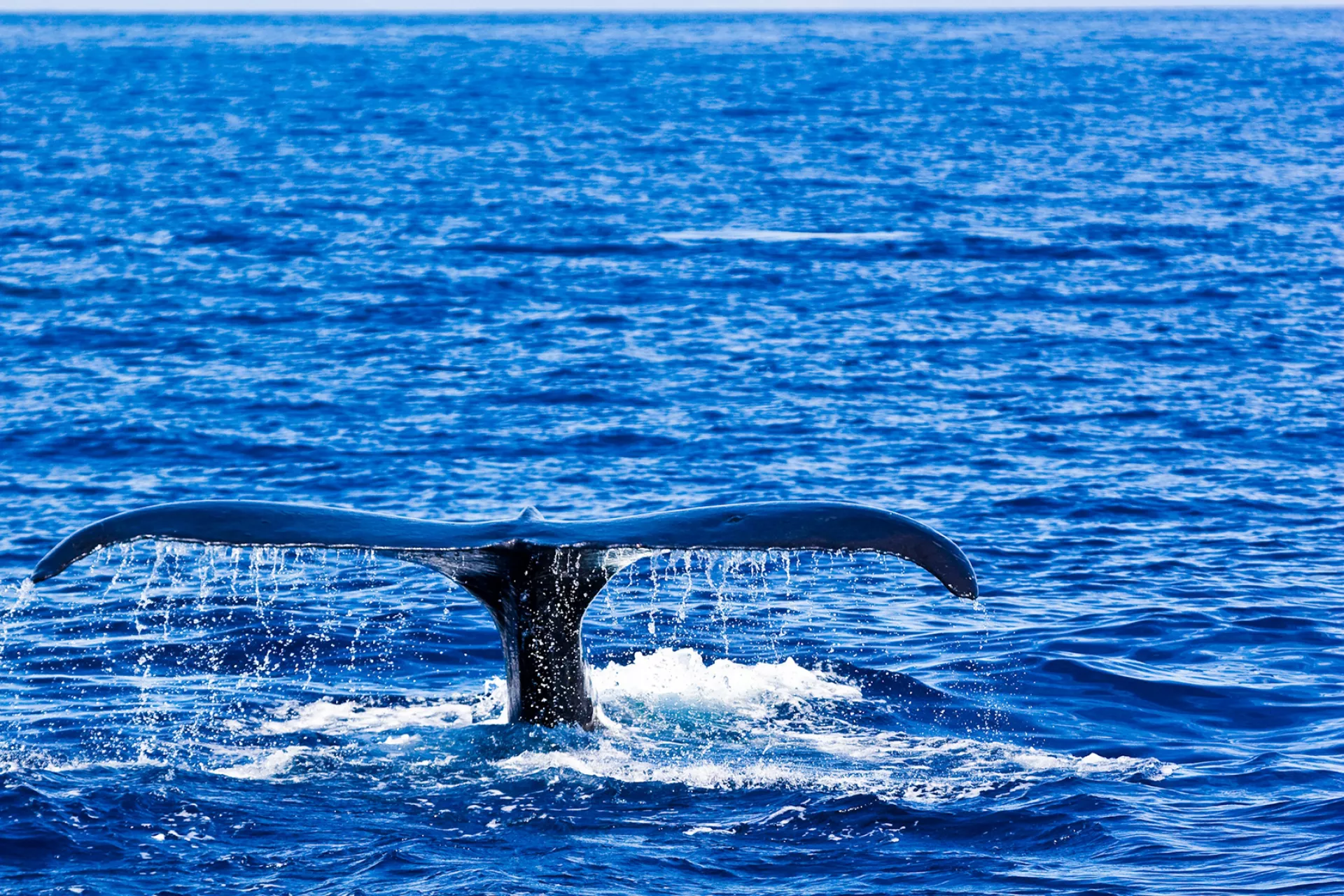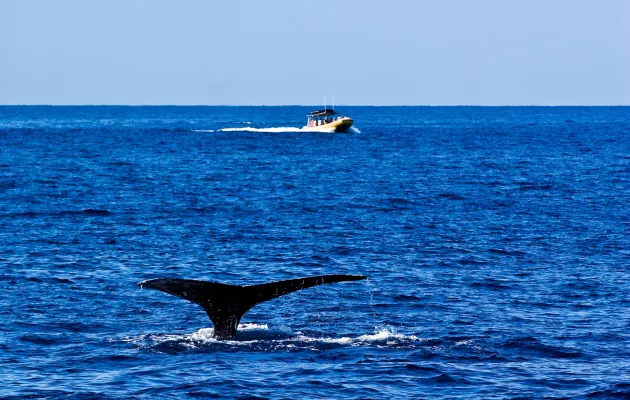
 Whales in Hawaiian Culture
Whales in Hawaiian Culture
The Cultural Significance of Whales in Hawaiʻi
The Circle of Life
Native Hawaiians have a powerful spiritual connection to all forms of life. According to their traditions, the islands, the skies above, the vast oceans, plants and animals were created by their gods, forming a bond of life between the people and their environment.The closeness between native Hawaiians and the natural world is especially strong with family ʻaumakua, deified ancestors who could take the form of an animal such as a shark, turtle, owl or for some families, the koholā (whale). It is said that ʻaumakua appeared in dreams and visions, providing spiritual guidance and a connection between the physical and spiritual worlds. Throughout Hawaiʻi, many people still honor ʻaumakua, whether it's a family relationship or a personal sense of respect.
Names for Whales in Hawaiʻi
The Hawaiian language is very descriptive, and gave birth to many names for different types of rain, ocean conditions, environments and even animals. The word koholā refers to reef flats as well as the humpbacked whale, perhaps linking the spray of the waves on the reef with the spray from a whale's blow. Palaoa is used to refer to sperm whales or the ivory from whale tusks that were highly prized as fishhooks and pendants reserved for aliʻi (royalty). Like many living languages, Hawaiian is also evolving; more recently, the term kuapi‘o (humpback or arched back) has given rise to the name kuapi‘o koholā, or, literally, humpback whale.Bishop Museum has several lei niho palaoa in its collection. These are extremely sacred lei (necklaces) made with niho palaoa (whale tooth) pendants and numerous strands of woven human hair. Although there is no record of Hawaiians killing whales, sperm whales that washed ashore were considered extremely sacred to the aliʻi (royalty), and the necklaces made from their teeth and bones represented the strength of the gods and their mana (spirit), and symbolized the chief's rank and his authority.
Whales and Legends
Whales are also evident in Hawaiian legends, including a story of creation. Although they are too numerous and lengthy to share here, a few of the most well known are "The Mystery of the Koholā," "Mākua's Prayer—A Legend of the Chosen One" and "Hānau Ka Palaoa Noho I Kai (The Palaoa Was Born and Lived in the Sea)."
Whale Images and Places
Although the Hawaiian language is traditionally an oral language, throughout the islands there are petroglyphs (carvings in stone) that illustrate some of the aspects of Hawaiian culture. There are three carvings that are believed to represent whales. The first is on the island of Lānaʻi on an area known as Palaoa Hill, or "Whale Hill." The petroglyph depicts a human figure on the back of a whale. A second petroglyph is located at Pōhue on the island of Hawaiʻi and bears the resemblance of a sperm whale. A third whale petroglyph is in Olowalu, Maui.There are also a handful of locations whose names include koholā or palaoa, each with a story to tell. One of the most dramatic is the history of Puʻukoholā (whale hill) Heiau (temple) located in Kawaihae on the island of Hawaiʻi. The temple was built by Kamehameha I in honor of his family war god, Kūkāʻilimoku. A prophecy foretold Kamehameha that if he built the heiau under the strict guidelines to please his god, he would eventually overcome the island chiefs and ascend to become the ruler of all the Hawaiian Islands. The heiau was completed in 1791 and by 1810, Kamehameha had become the first chief to unify all of Hawaiʻi.
Find More Information About Whale Watching

Migratory patterns of humpback whales make sightings common throughout the islands during winter and early spring, but other varieties are visible throughout the year.
More
